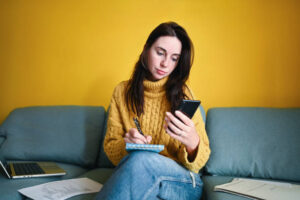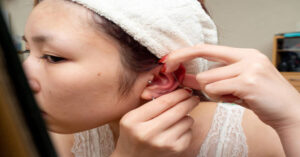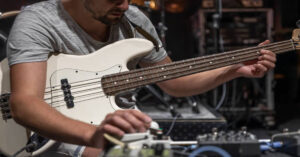Among the family of brass instruments, few have a tone as warm, velvety, and lyrical as the flugelhorn. This instrument, often seen in jazz ensembles, brass bands, and orchestras, carries a unique identity—a blend of trumpet brilliance and French horn warmth. Although it resembles a trumpet in appearance, the flugelhorn has a distinct construction, playing technique, and tonal character that sets it apart.
Over the centuries, the flugelhorn has evolved from a simple signaling instrument to a sophisticated tool of musical expression. In this comprehensive article, we’ll explore every facet of the flugelhorn—its history, anatomy, types, techniques, cultural significance, and how to care for it. Whether you are a musician, a student, or simply curious about brass instruments, this guide will help you understand why the flugelhorn holds a special place in the world of music.
1. What is a Flugelhorn?
The flugelhorn is a brass wind instrument with a conical bore, typically pitched in B♭, though variations in other keys also exist. It is part of the same family as the trumpet and cornet, but it differs in both construction and tone. While the trumpet produces a brilliant, bright, and piercing sound, the flugelhorn produces a mellow, dark, and rounded tone, making it ideal for lyrical passages and jazz ballads.
Its name comes from the German word Flügel, meaning “wing” or “flank.” Originally, it was used to signal the flanking of troops during military campaigns. Today, the flugelhorn has transcended its military roots and found its voice in multiple genres, from classical concert halls to intimate jazz clubs.
2. Historical Evolution of the Flugelhorn
Understanding the evolution of the flugelhorn provides valuable insight into how it became the versatile instrument we know today.
| Period | Development Stage | Key Evolutionary Feature |
|---|---|---|
| 18th Century | Military signaling instrument | Early bugle-like design |
| Early 19th Century | Transition to keyed brass | Addition of valves for pitch control |
| Mid 19th Century | Instrument standardization | Widened bore and smoother bell |
| 20th Century | Jazz and orchestral adoption | Rise in solo and ensemble use |
| 21st Century | Modern manufacturing | Precision valves, improved intonation, lightweight materials |
Originally used as a valveless bugle, the instrument gradually incorporated piston valves similar to those on trumpets and cornets. This innovation allowed players to perform chromatic passages, transforming it from a signaling horn into a fully functional musical instrument.
The flugelhorn gained popularity in Europe—especially in Germany, Austria, and England—before spreading to the United States, where it became a staple in jazz music and brass bands.
3. Structure and Design of the Flugelhorn
The flugelhorn’s unique sound is directly influenced by its physical structure. Although it resembles the trumpet, the differences in its bore shape, tubing, and bell are crucial.
Main Components of the Flugelhorn:
- Mouthpiece:
The flugelhorn mouthpiece is deeper and more V-shaped compared to a trumpet mouthpiece. This contributes to its warm and rounded sound. - Leadpipe:
The leadpipe is slightly longer and more gently tapered, which creates less resistance and smoother air flow. - Valve System:
Usually equipped with three piston valves, though some models include a fourth valve for extended lower range and intonation adjustment. - Bore:
A larger conical bore differentiates it from the trumpet’s cylindrical bore, giving it a darker tone. - Bell:
The flugelhorn’s bell is wider and more flared, further enhancing its soft timbre. - Tuning Slide:
Allows fine-tuning of pitch, essential in ensemble playing.
| Part | Function | Effect on Sound |
|---|---|---|
| Mouthpiece | Initiates vibration | Deep, mellow tone |
| Leadpipe | Directs air into tubing | Smooth airflow |
| Bore | Shapes resonance | Warm, dark timbre |
| Bell | Projects sound | Wide dispersion |
| Valves | Alters pitch | Full chromatic range |
4. Types of Flugelhorns
Flugelhorns are not one-size-fits-all. Over time, several variations have been developed to suit different playing styles, genres, and skill levels.
| Type | Description | Best For |
|---|---|---|
| Standard B♭ Flugelhorn | The most common model used worldwide. | Jazz, classical, marching bands. |
| E♭ Flugelhorn | Smaller, brighter tone; often used in brass bands. | Soloists, advanced players. |
| Rotary Valve Flugelhorn | Uses rotary valves for smoother transitions. | Orchestral and classical performances. |
| Piston Valve Flugelhorn | Traditional piston mechanism, common in jazz. | Versatile genres. |
| Custom and Hybrid Models | Modern designs blending trumpet and flugelhorn elements. | Professional performers. |
While most musicians start with the B♭ model, professionals often explore rotary valve versions for their fluid phrasing and refined tone.
5. Flugelhorn vs Trumpet vs Cornet
Although the flugelhorn is part of the trumpet family, its sound, feel, and purpose differ significantly. The table below highlights these distinctions:
| Feature | Flugelhorn | Trumpet | Cornet |
|---|---|---|---|
| Bore Shape | Conical | Cylindrical | More conical |
| Tone | Warm, mellow, dark | Bright, brilliant | Smooth, round |
| Bell Size | Wide flare | Narrower | Moderate |
| Mouthpiece | Deep V-cup | Shallow U-cup | Intermediate |
| Playing Feel | Less resistance | High resistance | Moderate resistance |
| Typical Use | Jazz ballads, lyrical solos | Classical, jazz, marching | Brass bands, solos |
The flugelhorn offers a more intimate and emotional tone, often used for expressive solos, while the trumpet cuts through ensembles with a brighter, more assertive sound.
6. Playing Techniques for Flugelhorn
Mastering the flugelhorn requires a combination of technical precision and artistic sensitivity. Unlike the trumpet, which relies on power and projection, the flugelhorn thrives on subtlety, control, and tonal warmth.
Key Techniques:
- Embouchure Control:
Since the flugelhorn has a deeper mouthpiece, a relaxed embouchure and steady air support are crucial for producing a centered tone. - Breath Support:
The larger bore demands slower, warmer airflow, emphasizing smoothness over intensity. - Valve Coordination:
Clean valve technique ensures accurate intonation and legato phrasing. - Dynamic Shading:
The flugelhorn excels at soft dynamics, allowing for delicate expression, especially in ballads. - Articulation:
Tonguing must be gentle to match the instrument’s soft timbre. - Intonation Awareness:
Due to its conical bore, the flugelhorn can be slightly more temperamental than the trumpet. Good tuning habits are essential.
7. Sound Characteristics of the Flugelhorn
The sound of the flugelhorn is its most defining feature. It is smooth, velvety, and round, often compared to a blend between a trumpet and a French horn. This makes it especially effective for lyrical solos, jazz ballads, and warm harmonic lines.
Tonal Qualities:
- Mellow and dark timbre
- Soft attack
- Gentle projection
- Warm resonance
- Ideal for blending in ensembles
The flugelhorn does not cut through a large ensemble like a trumpet. Instead, it sits within the texture, creating a sonic cushion around other instruments.
8. Musical Genres that Feature Flugelhorn
Although once limited to military and brass bands, the flugelhorn now features in a wide array of musical genres.
| Genre | Role of Flugelhorn | Tone Utilization |
|---|---|---|
| Jazz | Lyrical solos, melodic phrasing | Warm, expressive |
| Classical | Solo concertos, chamber works | Rich harmonic blending |
| Pop & Rock | Background layers, hooks | Soft, emotional tone |
| Brass Bands | Core melodic voice | Balanced projection |
| Film Scores | Emotional themes | Intimate, cinematic sound |
Famous jazz artists have elevated the flugelhorn to an expressive solo instrument, and film composers often use it for romantic or nostalgic scenes.
9. Famous Flugelhorn Players and Their Impact
Throughout history, several musicians have shaped the identity of the flugelhorn. Their artistry helped the instrument transcend its supporting role.
| Musician | Contribution | Impact |
|---|---|---|
| Chuck Mangione | Iconic use in jazz fusion | Popularized flugelhorn in mainstream jazz |
| Art Farmer | Lyrical phrasing | Expanded flugelhorn’s role as a solo instrument |
| Clark Terry | Technical brilliance | Influenced modern jazz technique |
| Maynard Ferguson | High-register innovation | Integrated flugelhorn into big bands |
| Kenny Wheeler | Atmospheric playing | Shaped modern orchestral jazz flugelhorn sound |
These artists demonstrated that the flugelhorn isn’t just a “soft trumpet” but a powerful tool for melodic storytelling.
10. How to Choose a Flugelhorn
Selecting the right flugelhorn is crucial for both beginners and professionals. Key factors to consider include:
| Factor | Description |
|---|---|
| Material | Brass is most common; silver or gold plating affects tone quality. |
| Bore Size | Larger bores give warmer sounds but need more air. |
| Bell Size | Bigger bells offer broader projection. |
| Valve Type | Piston for versatility, rotary for classical smoothness. |
| Mouthpiece | Deeper cups produce richer tones. |
| Weight and Balance | Affects comfort during extended playing. |
Trying different models before purchase can help match the instrument to the player’s sound preference and physical comfort.
11. Flugelhorn Accessories and Maintenance Tools
To keep the flugelhorn in optimal playing condition, regular maintenance is essential.
Common Accessories:
- Mouthpiece brush
- Valve oil
- Cleaning snake
- Polishing cloth
- Mute (straight or cup mute)
- Protective case
Basic Maintenance Routine:
- Wipe the exterior after each use.
- Oil valves regularly to prevent sticking.
- Clean the leadpipe and tuning slides to remove buildup.
- Store in a stable, humidity-controlled environment.
Proper care extends the instrument’s life and preserves its warm tone.
12. Flugelhorn in Modern Technology and Manufacturing
Modern flugelhorns benefit from advanced manufacturing techniques that enhance playability and intonation. Precision valve systems, lighter alloys, and improved tuning slides make today’s instruments far more stable than their early counterparts.
Technological innovations include:
- CNC-machined valves for smoother action
- Hybrid brass and nickel-silver alloys for durability
- Improved mouthpiece shank compatibility
- Acoustic modeling to refine bell design
These innovations have made flugelhorns more accessible to students and professionals alike.
13. Educational Role of the Flugelhorn
The flugelhorn plays a valuable role in music education, particularly for brass students transitioning from cornet or trumpet. Because of its forgiving tone and comfortable resistance, it helps young players develop air support, phrasing, and musical sensitivity.
Many music programs use flugelhorns in youth brass bands and beginner jazz ensembles to teach expressive playing and dynamic control.
14. Flugelhorn in Jazz: A Closer Look
In jazz, the flugelhorn holds a distinct and beloved position. Its mellow tone complements ballads, modal jazz, and fusion styles, creating a warm contrast to brighter trumpets or saxophones.
Common Jazz Techniques:
- Legato phrasing for smooth melodic lines.
- Soft attacks to blend seamlessly with rhythm sections.
- Vibrato control for emotional expression.
- Dynamic shading to shape solos musically.
Artists like Chuck Mangione and Kenny Wheeler transformed the flugelhorn into a primary solo instrument, not just a background voice.
15. Flugelhorn in Classical and Orchestral Settings
In classical settings, the flugelhorn is often used to enrich the middle register of brass sections. It blends beautifully with horns, trombones, and woodwinds, adding a soft cushion of sound without overpowering other instruments.
Composers use it in:
- Orchestral textures
- Solo concertos
- Brass ensemble arrangements
- Contemporary classical compositions
Its tone fills the gap between trumpet brilliance and horn warmth, making it a valuable orchestral tool.
16. Flugelhorn in Popular Culture and Film
The flugelhorn has made subtle yet powerful appearances in popular music and film scores. Its romantic and nostalgic tone often underscores love scenes, flashbacks, or emotionally charged moments.
Why it’s used in film scores:
- Evokes warmth and emotion
- Blends naturally with strings
- Adds human-like lyrical quality
- Works well for solos and background textures
Pop and rock bands have also incorporated the flugelhorn for its distinctive flavor, proving its versatility beyond traditional genres.
17. Proper Posture and Breathing Techniques
Unlike woodwinds, brass instruments rely heavily on breath control and posture. For the flugelhorn:
- Sit or stand tall to allow proper lung expansion.
- Use deep diaphragmatic breathing rather than shallow chest breathing.
- Maintain relaxed shoulders and arms to avoid tension.
- Keep the horn at a comfortable angle to encourage natural airflow.
Correct posture enhances tone production and endurance.
18. Common Challenges for Beginners
Many beginners face specific challenges when learning the flugelhorn. Addressing these early can help build a strong foundation.
| Challenge | Solution |
|---|---|
| Airflow inconsistency | Practice long tones with steady breath. |
| Mouthpiece adaptation | Use buzzing exercises to build embouchure strength. |
| Intonation issues | Warm up carefully and use a tuner regularly. |
| Valve technique | Slow, precise fingering practice. |
| Fatigue | Build endurance gradually with proper breathing. |
Regular practice and proper technique lead to steady improvement.
19. Tips for Professional Flugelhorn Performance
For advanced players aiming to refine their craft:
- Use warm-up routines tailored to conical bore instruments.
- Explore different mouthpieces for tonal variety.
- Record practice sessions to monitor tone and phrasing.
- Experiment with mutes to discover unique colors.
- Collaborate with pianists or guitarists to develop phrasing sensitivity.
Professional players often keep both a trumpet and flugelhorn in their arsenal, switching between them for contrasting textures.
20. Future of the Flugelhorn
The future of the flugelhorn looks promising and dynamic. Its use continues to expand in:
- Digital music production (sample libraries, virtual instruments)
- Experimental jazz and classical fusion projects
- Cross-genre collaborations
- Music education and therapy
With its warm human voice-like tone, the flugelhorn remains a beloved instrument in modern music. Innovations in lightweight materials and acoustic modeling are likely to further enhance its playability and reach.
Conclusion
The flugelhorn is far more than just a relative of the trumpet. It’s a storyteller—an instrument capable of expressing warmth, melancholy, romance, and subtlety in a way few brass instruments can match. From its military roots to modern jazz stages and concert halls, the flugelhorn has evolved into a versatile and cherished part of musical culture.
Whether you’re a beginner learning your first notes or a professional seeking tonal depth, the flugelhorn offers endless opportunities for emotional expression and musical exploration.
FAQs
1. What is a flugelhorn used for?
The flugelhorn is used in jazz, brass bands, classical ensembles, and film scores for its warm, mellow sound.
2. How does a flugelhorn differ from a trumpet?
The flugelhorn has a conical bore and deeper mouthpiece, producing a softer tone than the trumpet’s bright, piercing sound.
3. Is the flugelhorn good for beginners?
Yes. Its smooth resistance and warm tone make it suitable for beginners transitioning from cornet or trumpet.
4. What genres feature the flugelhorn most?
The instrument is most common in jazz, brass bands, classical settings, and film music.
5. How do you maintain a flugelhorn?
Regular cleaning, valve oiling, and proper storage in a case keep the flugelhorn in top condition.









